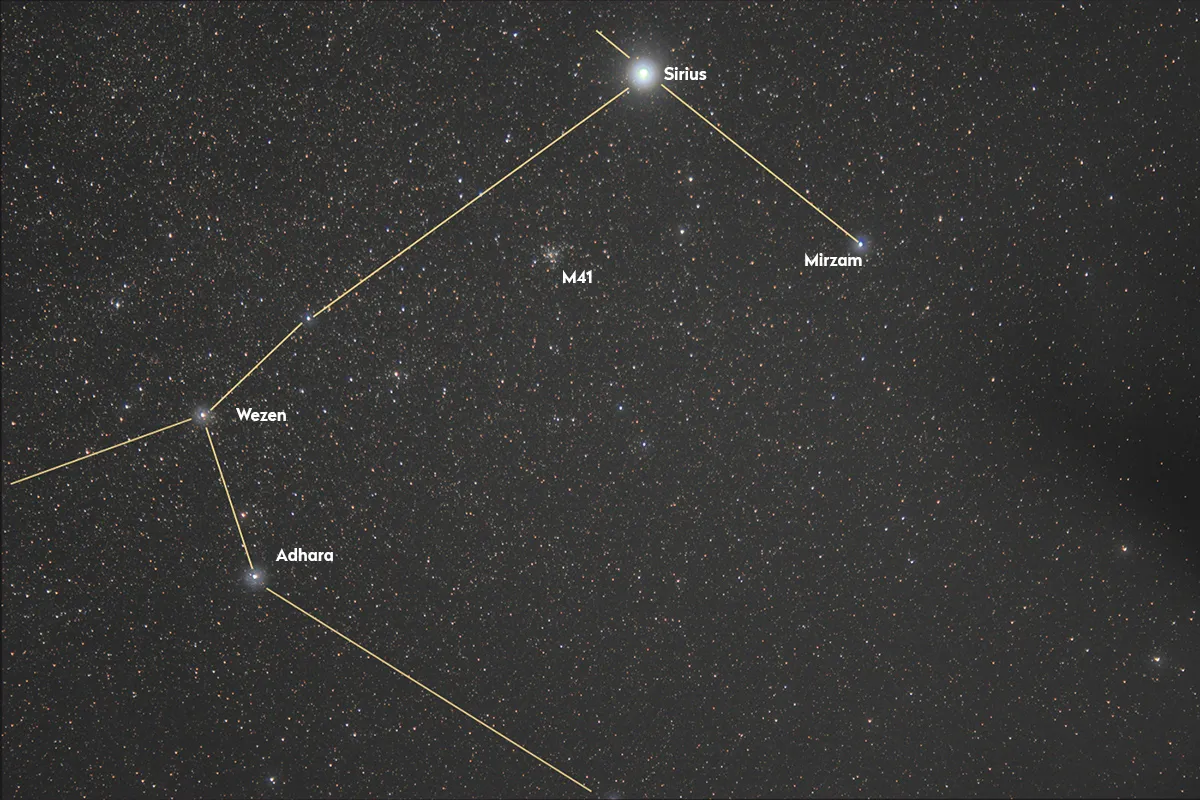Mirzam is the fourth brightest star in Canis Major, the Great Dog, and makes for a quick and easy star hop once you've found Sirius in the night sky.
Although Mirzam (Beta (β) Canis Majoris), shines at mag. +2.0, it’s outshone by its sky neighbour, mag. –1.5 Sirius (Alpha (α) Canis Majoris).
Mirzam lies 5.5˚ west and a bit south of Sirius and is easy to identify for this reason.
Its name is derived from the Arabic term meaning ‘The Herald’, thought to refer to the fact that it rises just before Sirius, so heralding or announcing the appearance of its neighbour.

Sirius may appear to dominate over Mirzam in terms of brightness - indeed, it's the brightest star in the night sky - but the pair are an example of how the apparent sky we see is deceptive.
Sirius is located 8.7 lightyears away from the Sun. Mirzam is a more distant star, estimated to be 490 lightyears away.
Although Sirius appears to be 24 times brighter to us in the sky, Mirzam is 56 times further away.

If you were to place them at a standard distance of 10 parsecs, or 32.62 lightyears, Sirius would have an absolute magnitude of +1.4 while Mirzam would appear at mag. –4.1, similar to how bright Venus appears from Earth.
If you were to place Mirzam at the distance of Sirius, it would shine 15 times brighter than Venus appears to us!
Mirzam has a spectral type of B1 II-III, a hot, blue, bright giant star (for more on this, read our guide to the colour of stars).
Its temperature has been measured at 25,527˚C, which means that a lot of its radiative output is in the spectrum’s ultraviolet part.
By comparison, it’s 14 times more massive, 10 times larger and has a luminosity around 26,600 times larger than the Sun.
It's also a variable star, the brightest member of the Beta Cephei class of variables.
This guide originally appeared in the February 2022 issue of BBC Sky at Night Magazine.
